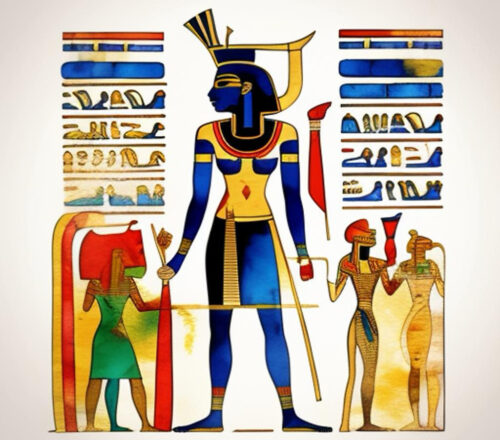
Table of Contents
Unveiling the Depths
The phrase “Eloi, Eloi, lema sabachthani” uttered by Jesus on the cross has captivated hearts and minds for centuries. Its translation from the original Aramaic and the myriad interpretations it has inspired have given rise to profound theological, spiritual, and philosophical discussions. In this article, we delve into the depths of this phrase, exploring its translation, possible interpretations, and the rich tapestry of meanings it carries.
Translation and Linguistic Considerations
The Aramaic Origins
Tracing the phrase back to its original Aramaic form, “Eloi, Eloi, lema sabachthani,” we examine the linguistic nuances and translational challenges faced when rendering it into other languages, such as Greek and English.
Exploring Translations
Analyzing various translations, both literal and interpretive, to shed light on the different ways scholars and theologians have approached rendering this poignant cry.
Theological Significance
The Cry of Abandonment
A Literal Expression of Suffering: Discussing the literal meaning of Jesus’ cry, “My God, my God, why have you forsaken me?” and its theological implications.
The Humanity of Jesus: Reflecting on how this cry portrays Jesus’ identification with human suffering, his experience of feeling forsaken, and the depth of his empathy for humanity.
Messianic Fulfillment
Prophetic Connection: Exploring the connection between Jesus’ cry and Psalm 22, a prophetic psalm attributed to King David, which foretells the suffering of the Messiah.
The Fulfillment of Scripture: Examining how Jesus’ words fulfilled the Messianic prophecies, reinforcing his identity as the promised Savior.
Philosophical and Mystical Interpretations
Existential Questions
Is this the End of Creation? Delving into the existential question raised by Jesus’ cry, exploring its implications for the fate of creation and the potential transformative power of suffering.
Spiritual Fulfillment
The End or Fulfillment of Creation
Investigating the notion that Jesus’ sacrifice represents the culmination of God’s plan, leading to spiritual fulfillment and the possibility of salvation for humanity.
Sabbath Rest and Restoration
Considering the mention of “your Sabbath” in some translations, exploring its connection to the spiritual rest and restoration found through Christ’s sacrifice.
Personal Reflections and Contemporary Relevance
Inviting personal reflection
Encouraging readers to reflect on the significance of Jesus’ cry and its relevance to their own spiritual journeys, grappling with questions of suffering, faith, and the transformative power of love.
Conclusion
The translation and interpretations of “Eloi, Eloi, lema sabachthani” reveal the profound depths of Jesus’ cry on the cross. From linguistic considerations to theological significance, philosophical questions, and personal reflections, this phrase resonates on multiple levels. It challenges us to explore the nature of suffering, the fulfillment of divine plans, and the transformative power of Jesus’ sacrifice. As we delve into its mysteries, we find ourselves on a contemplative journey that invites us to deepen our faith, seek understanding, and ponder the profound truths embedded within this cry from the heart of the Savior.
Shop Corner
Eloi, lema sabachthani On Amazon
Thank you for reading, shares and comments!
✨ Comment Policy ✨
We welcome thoughtful, kind, and constructive comments that contribute to meaningful conversations.
Please note:
- Promotional links and unsolicited offers will be removed.
- Spam, irrelevant content, or self-promotion without prior permission will not be published.
- We value quality engagement over quantity — thank you for helping us keep this a respectful and inspiring space!
Sources openai Language models, aitrot, picsart and mib
Take time to learn
Invest in your future
Embark on a journey into the realm of affiliate marketing and craft your own website within a vibrant, supportive community. Join me in this adventure, where you can begin as a free starter and stay as long as you desire. Enjoy complimentary hosting and foundational teachings to set you on your path. For those with advanced skills, opportunities to elevate your expertise await. Take a moment to explore and witness the magic for yourself!




